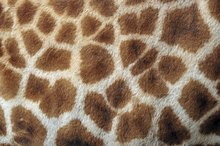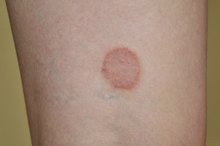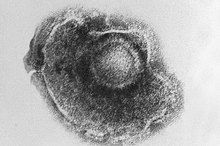Commonly Misdiagnosed Circular Rashes in Children
The skin is the largest and most easily visible organ of the body, so many people notice problems with their skin, such as rashes. Because rashes are often diagnosed visually, based on their appearance and pattern, some may get misdiagnosed. A number of different conditions can cause circular rashes in children, although perhaps most people might think of the infection known commonly as ringworm.
Ringworm
Tinea corporis, is a superficial infection of the skin, meaning it only affects the top layer. Although caused by a fungus, tinea corporis is typically referred to as “ringworm.” The characteristic “rings” of ringworm are itchy, circular areas of the skin with a clear patch in the center. although there can be many variations in appearance.
Usually, the diagnosis is made based on just the appearance of these rings, but it can be confirmed by scraping a bit of skin from the ring around the edge and preparing it with a special solution to look under a microscope to see the branches of fungus causing the infection.
Treatment for ringworm is usually an antifungal cream applied directly to the skin.
- Tinea corporis, is a superficial infection of the skin, meaning it only affects the top layer.
Nummular Eczema
Diseases Causing Skin Rash
Learn More
Eczema, a non-contagious, itchy, recurring skin rash, is one of the most common and stressful of all chronic skin disorders. A particular kind of eczema, called nummular eczema or discoid eczema, also causes a circular rash, most commonly on the legs and buttocks of children. Unlike ringworm, nummular eczema does not have the central clearing. The lesions of the rash look more like coins than rings.
- Eczema, a non-contagious, itchy, recurring skin rash, is one of the most common and stressful of all chronic skin disorders.
- A particular kind of eczema, called nummular eczema or discoid eczema, also causes a circular rash, most commonly on the legs and buttocks of children.
Herald Patch of Pityriasis Rosea
According to the American Academy of Dermatology website, the herald patch of pityriasis rosea is often mistaken for ringworm. However, no fungus will be seen under the microscope, and antifungal creams will not work. After some time, more oval patches will appear on your child's body and typically form a pattern on the back that resembles the outline of a Christmas tree.
Granuloma Annulare
What Do Scabies Look Like on Human Skin?
Learn More
Granuloma annulare, like ringworm, forms a ring-shaped lesion, but it usually is not itchy and feels firm to the touch. However, a doctor might still need to do a biopsy of the rash to make sure.
Target Lesion of Lyme Disease
Lyme disease is a bacterial infection spread by ticks. At the site of the tick bite, a ring-shaped or bull’s eye appearance develops. The patient’s history, such as a recent camping trip or tick bite, might be a clue that this rash would be an early sign of Lyme disease, but occasionally, it might be confused with granuloma annulare.
Seeing A Doctor
Any circular rash, especially in children, should probably be examined by a doctor to make an accurate diagnosis. Patients should also tell their doctor if the rash does not get better with the treatment, because the correct diagnosis may not have been made. Sometimes a referral to a dermatologist is necessary.
Related Articles
References
- "Atlas of Pediatric Physical Diagnosis, 5th edition;" Basil J Zitelli. and Holly W. Davis; 2007
- American Academy of Dermatolog: Pityriasis Rosea
- American Academy of Dermatology: Granuloma Annulare
- CDC Public Health Image Library: Lyme Disease
- Homei A, Worboys M. Fungal Disease in Britain and the United States 1850–2000: Mycoses and Modernity. Basingstoke (UK): Palgrave Macmillan; 2013. Chapter 1, Ringworm: A Disease of Schools and Mass Schooling. Available from: https://www.ncbi.nlm.nih.gov/books/NBK169210/
- Yee G, Al Aboud AM. Tinea Corporis. [Updated 2019 Jul 6]. In: StatPearls [Internet]. Treasure Island (FL): StatPearls Publishing; 2019 Jan-. Available from: https://www.ncbi.nlm.nih.gov/books/NBK544360/
- InformedHealth.org [Internet]. Cologne, Germany: Institute for Quality and Efficiency in Health Care (IQWiG); 2006-. Athlete's foot: Overview. 2015 Jan 14 [Updated 2018 Jun 14].Available from: https://www.ncbi.nlm.nih.gov/books/NBK279549/
- Al Aboud AM, Crane JS. Tinea Capitis. [Updated 2019 Mar 2]. In: StatPearls [Internet]. Treasure Island (FL): StatPearls Publishing; 2019 Jan-. Available from: https://www.ncbi.nlm.nih.gov/books/NBK536909/
- Homei A, Worboys M. Fungal Disease in Britain and the United States 1850–2000: Mycoses and Modernity. Basingstoke (UK): Palgrave Macmillan; 2013. Chapter 1, Ringworm: A Disease of Schools and Mass Schooling.
- Jain A, Jain S, Rawat S. Emerging fungal infections among children: A review on its clinical manifestations, diagnosis, and prevention. J Pharm Bioallied Sci. 2010;2(4):314–320. doi:10.4103/0975-7406.72131
- Yee G, Al Aboud AM. Tinea Corporis. [Updated 2019 Jul 6]. In: StatPearls [Internet]. Treasure Island (FL): StatPearls Publishing; 2019 Jan-.
- Alkeswani A, Duncan JR, Theos A. Tinea faciei starting at day two of life. Pediatr Dermatol. 2019;36(1):e20-e22.
- Furlan KC, Kakizaki P, Chartuni JC, Valente NY. Sycosiform tinea barbae caused by trichophyton rubrum and its association with autoinoculation. An Bras Dermatol. 2017;92(1):160–161. doi:10.1590/abd1806-4841.20174802
- Hay RJ. Tinea Capitis: Current Status. Mycopathologia. 2017;182(1-2):87–93. doi:10.1007/s11046-016-0058-8
- InformedHealth.org [Internet]. Cologne, Germany: Institute for Quality and Efficiency in Health Care (IQWiG); 2006-. Athlete's foot: Overview. 2015 Jan 14 [Updated 2018 Jun 14].
- Nadalo D, Montoya C, Hunter-smith D. What is the best way to treat tinea cruris?. J Fam Pract. 2006;55(3):256-8.
- Das S, Barbhuniya JN, Biswas I, Bhattacharya S, Kundu PK. Studies on comparison of the efficacy of terbinafine 1% cream and butenafine 1% cream for the treatment of Tinea cruris. Indian Dermatol Online J. 2010;1(1):8–9. doi:10.4103/2229-5178.73249
- Errichetti E, Stinco G. Dermoscopy in tinea manuum. An Bras Dermatol. 2018;93(3):447–448. doi:10.1590/abd1806-4841.20186366
- Piraccini BM, Alessandrini A. Onychomycosis: A Review. J Fungi (Basel). 2015;1(1):30–43. Published 2015 Mar 27. doi:10.3390/jof1010030
- Ashraf M, Biswas J. Chronic ringworm infestation and Marjolin's ulcer, an association unknown in the literature. Rare Tumors. 2010;2(2):e31. Published 2010 Jun 30. doi:10.4081/rt.2010.e31
- Landry GL, Chang CJ, Mees PD. Treating and avoiding herpes and tinea infections in contact sports. Phys Sportsmed. 2004;32(10):43-4.
- Davis EC, Callender VD. Postinflammatory hyperpigmentation: a review of the epidemiology, clinical features, and treatment options in skin of color. J Clin Aesthet Dermatol. 2010;3(7):20–31.
- Fuller LC, Child FJ, Midgley G, Higgins EM. Diagnosis and management of scalp ringworm. BMJ. 2003;326(7388):539–541. doi:10.1136/bmj.326.7388.539
- Boral H, Durdu M, Ilkit M. Majocchi's granuloma: current perspectives. Infect Drug Resist. 2018;11:751–760. Published 2018 May 22. doi:10.2147/IDR.S145027
- Al Aboud AM, Crane JS. Tinea Capitis. [Updated 2019 Mar 2]. In: StatPearls [Internet]. Treasure Island (FL): StatPearls Publishing; 2019 Jan-.
- Ely JW, Rosenfeld S, Seabury stone M. Diagnosis and management of tinea infections. Am Fam Physician. 2014;90(10):702-10.
- “Ringworm: Signs and Symptoms.” American Academy of Dermatology, American Academy of Dermatology.
- Laniosz V, Wetter DA. "What's New in the Treatment and Diagnosis of Dermatophytosis?" Seminars in Cutaneous Medicine and Surgery. 2014 Sep;33(3):136-9.
Writer Bio
Mitali Ruths has been a professional writer since 2008. She received her M.D. from the Baylor College of Medicine in Houston and completed her pediatrics internship at Texas Children's Hospital. Ruths has worked as a magazine editor and contributed to several online publications.








